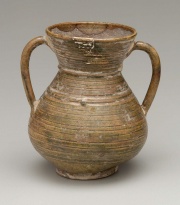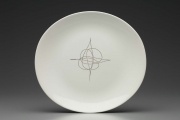Ceramic glaze
Jump to navigation
Jump to search
Description
A thin, vitreous, opaque coating fired on the surface of a Ceramic body to add color, texture, and/or water resistance. The glaze is typically a colored glass-forming mixture that is applied to the surface of a fired ceramic piece. The ceramic is then refired at a temperature that vitrifies the glaze, but is lower than the original firing temperature. Ceramic glazes are usually mixtures of silicates, colorants, and flux. Examples include: Alkaline glaze, Ash glaze, Bristol glaze, Crystalline glaze, Celadon, oxblood, peach bloom, Glaze, Matte glaze, Raw glaze, Salt glaze, Slip glaze, and Tin glaze.
Synonyms and Related Terms
glaçure céramique (Fr.); vidrado cerâmico (Port.)
Resources and Citations
- Ralph Mayer, A Dictionary of Art Terms and Techniques, Harper and Row Publishers, New York, 1969 (also 1945 printing)
- Robert Fournier, Illustrated Dictionary of Practical Pottery, Chilton Book Company, Radnor, PA, 1992
- Encyclopedia Britannica, http://www.britannica.com Comment: "traditional ceramics." Accessed 4 Feb. 2005.
- Art and Architecture Thesaurus Online, https://www.getty.edu/research/tools/vocabulary/aat/, J. Paul Getty Trust, Los Angeles, 2000

